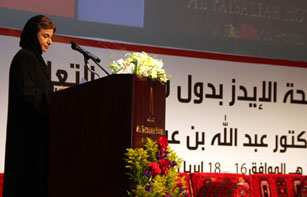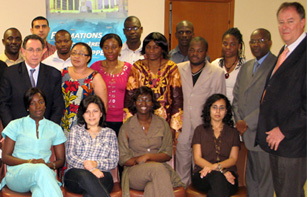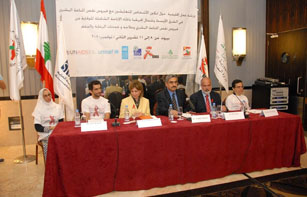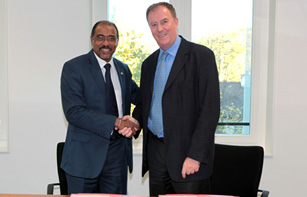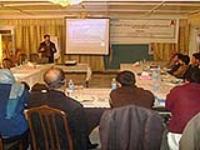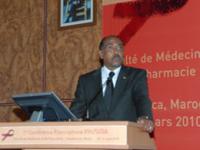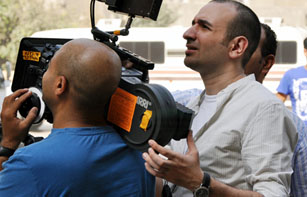
The next phase of the story is around the corner as the film will be launched later this year after touring several world film festivals.
“I am keeping my HIV status a secret from my family and friends. I am burdened by the disease and by my secret. I feel guilty, but I fear if I were to tell, that I would be rejected,” says Ali, a 25 year old man living with HIV.
This sense of isolation and low self esteem is all too common for many people living with HIV in Egypt. To date, not a single person living with HIV in the country has publically disclosed their status. So for the majority of Egyptians AIDS remains without a personal face which contributes to misconceptions and fear about the disease.
The world over, media plays a huge role in shaping public opinion about social issues and bringing to life the human impact and complexities of difficult themes. According to UNAIDS Country Officer in Egypt, Wessam El Beih, Egyptian media, especially the film industry, has propagated misinformation and portrayed biased views about people living with HIV, “leading to prejudice and discrimination.”
This film was a tremendous journey of exploration. I wanted this film to reflect the anger I felt for the injustices I have seen
Mr Amr Salama, script writer and director of Asmaa
Over the past several years, UNAIDS in Egypt has advocated with scriptwriters and film producers to create feature films that could bring a human face to HIV by creating characters that people could identify with. The inspiration behind this idea came from people living with HIV who hoped that social views would be more compassionate if their real experiences were shown in a drama.
In 2007, a young scriptwriter and director Amr Salama accepted the challenge after attending a meeting convened by UNAIDS with a group of people living with HIV. He listened to their stories and was touched by their experiences. Salama spent a full year, collaborating with UNAIDS, on several versions of a script featuring the true story of a woman who lived with HIV and died of injustice. He was anxious to convey the same emotional intensity that he had experienced when he heard people’s stories.
“This film was a tremendous journey of exploration. I wanted it to reflect the anger I felt for the injustices I have seen,” said Mr Salama. “I was angry, not just for the people I met who lived with HIV, but rather at the silence and injustice that were close to becoming norms in our society.” Mr Salama’s movie script is entitled Asmaa—a woman’s name which means “names” in Arabic.
Overcoming fear to speak out
The next big challenge for the project was grabbing the interest of a producer. Mohamed Hefzy, a young producer who had worked on social issues such as street children and autism, took an interest in bringing the film to life. Mr Hefzy’s conviction of the role of media in addressing human rights issues led him to believe this project was worth investing in.
I hope that the film, like the revolution, will empower people living with HIV to do the same and that society's perception will change irreversibly as a result
Mr Mohamed Hefzy, film producer
“It's ironic that this film, about a woman who decides to break the fear barrier to demand her basic rights for health care, was made before the Egyptian revolution. After all, the revolution was only made possible by Egyptians overcoming their fear to speak out. I hope that the film, like the revolution, will empower people living with HIV to do the same and that society's perception will change irreversibly as a result," says Mr Hefzy.
People living with HIV have been involved in many of the steps in creating this movie, some even acted on screen, and their experiences have inspired and informed the views of the cast.
The film has been given star endorsement. Tunisian celebrity actress Hind Sabry, who lives in Egypt, plays the leading role in the film of the character Asmaa. This is the story of a woman who bravely overcomes her own fears as well as social rejection to claim her rights.

Tunisian actress Ms Hind Sabry plays the leading role in the film, the character Asmaa.
Ms Sabry has personally committed to advocating for the rights of people living with HIV for several years. She has participated in TV public service announcements and been a voice for people living with HIV in several forums. To prepare her for this role, UNAIDS facilitated meetings between the actress and women living with HIV.
“I believe the movie may come under criticism because it tackles thorny issues, but Asmaa is an artistic and humanitarian experience,” said Ms Sabry.
The next phase of the project is around the corner as the film will be launched later this year after touring several world film festivals. Many people—in Egypt and further afield—eagerly await the release of the production and carry a lot of hope for positive social change.




